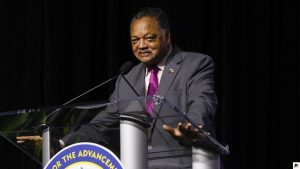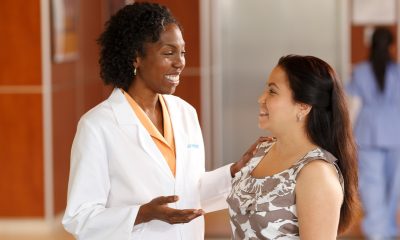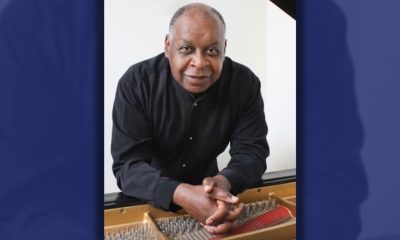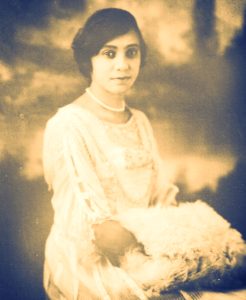#NNPA BlackPress
Minnesota Doctors on the Cutting Edge Of COVID-19 Fight
NNPA NEWSWIRE — Molecular testing technologies help detect the presence of a virus by identifying a small section of the virus’ genome, then amplifying that portion until there’s enough for detection. This process can cut testing wait time from hours, if not days, to as little as five minutes for positive results and 13 minutes for negative results. They have been using this technique for influenza detection since 2014.
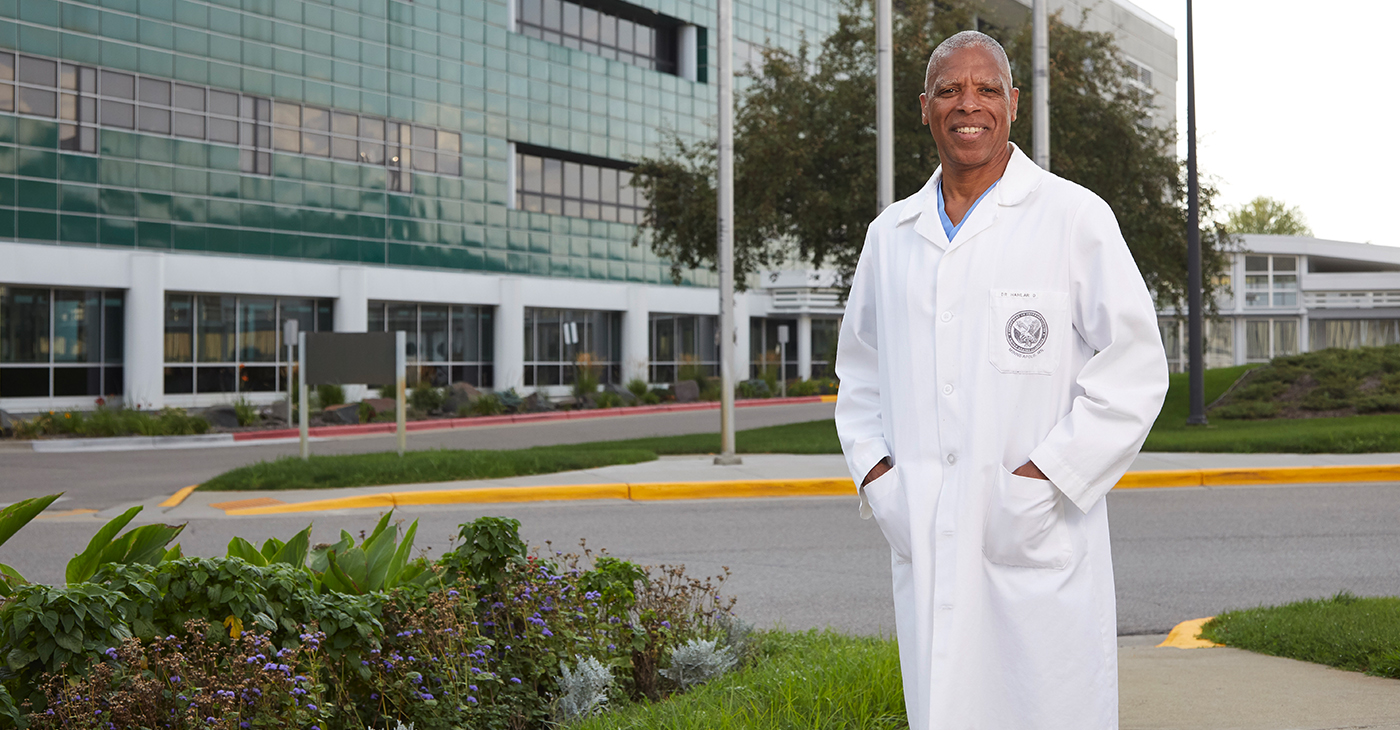
By Mel Reeves, Minnesota Spokesman-Recorder Community Editor
Minnesota doctors and researchers are on the cutting edge leading the fight in the war against COVID-19. Doctors and researchers at the University of Minnesota and Mayo Clinic are searching for medications that help ease the effects of the virus, including a process of plasma transfer, while also working to develop a vaccine.
No ‘new normal’ until August
The MSR interviewed Dr. David Hamlar (DH), assistant professor of the Department of Otolaryngology at the University of Minnesota
MSR: Incredibly, despite the number of cases and deaths, there are some in our community calling the coronavirus a conspiracy or hoax. What do you say to them?
DH: This is no hoax!
MSR: Why has the CDC and others recommended people stay six feet apart?
DH: People who are within six feet of one another may spread the virus through respiratory droplets produced when an infected person coughs or sneezes. These droplets can land in the mouths or noses of those who are nearby or potentially be inhaled into the lungs. The droplets are airborne through aerosolization [producing a fine mist of minute particles].
MSR: How does one actually contract the virus?
DH: The COVID-19 virus can live in any living cell. It is transmitted primarily via the aero-digestive system, meaning airways and oral mucosa.
MSR: Has anything been found to be effective in fighting off the effects of the virus?
DH: Peridex or chlorhexidine has been found to decrease the viral load but not eliminate the virus itself.
MSR: There has been talk about anti-virals being effective in helping those who have contracted the virus to fight it off. Tell us more about that.
DH: Antivirals are the same medications initially utilized in HIV-positive patients who contracted AIDS. These seemed to lessen the symptoms if not reduce the viral load and increase the CD4-T cell count.
MSR: What makes the virus fatal?
DH: COVID-19 deaths are attributed to pulmonary or lung disease progression such as pneumonia. Cardiac events such as heart attacks have not been found to be part of the disease progression and death.
MSR: Why are pre-existing diseases a serious problem for people if they contract the virus?
DH: Pre-existing conditions such as asthma, chronic obstructive pulmonary disease, COPD, diabetes, congestive heart failure, CHF, and autoimmune diseases limit the body’s ability to fight diseases.
MSR: There has been a lot of discussion in the medical community about a vaccine. How soon do you anticipate one being ready for use?
DH: With controlled protocol-based studies, the estimate for a safe vaccine is 9-12 months away.
MSR: There have been problems in the U.S. getting people tested for COVID-19, some reporting long waits for test results. It has been reported that Abbott Labs has come up with a test that can provide results in a matter of minutes. How are they able to do this?
DH: Abbott Labs can detect the COVID-19 virus through a technique called molecular point-of-care testing for COVID-19, which offers healthcare workers rapid results in more settings where people show up for care.
Molecular testing technologies help detect the presence of a virus by identifying a small section of the virus’ genome, then amplifying that portion until there’s enough for detection. This process can cut testing wait time from hours, if not days, to as little as five minutes for positive results and 13 minutes for negative results. They have been using this technique for influenza detection since 2014.
MSR: There has been some discussion around Vitamin C that it can help stave off the disease. What is your professional opinion about its effectiveness?
DH: Vitamin C is a potent antioxidant, helping to reduce the damage caused by free radicals and thereby helping prevent the development of conditions like heart disease and cancer. Severe vitamin C deficiency is a serious condition, known for centuries as the sometimes-fatal disease scurvy. It helps in wound healing. It is a part of a healthy diet. It is not a specific inhibitor of contracting COVID-19.
MSR: When do you expect the virus to peak? When do you think the country can get back to normal?
DH: I personally feel that this is a virus that will be with us for prolonged periods until a vaccine is found. If the virus mutates or recurs in different forms, then even vaccines will be limiting disease agents like with influenza.
Once we get control or flatten the curve, we can start to realize a “new normal.” I predict August.
MSR: Any advice to our readers on how to stay safe during this pandemic?
DH: Stay healthy. Eat right, get rest, don’t smoke, limit alcohol use, and do all of the things your mother told you to do but you neglected!
Push for plasma treatment underway
At Mayo Clinic in Rochester, Dr. Michael Joyner (MJ) is part of a group of experts who are pursuing a unique but time-tested treatment to help patients with COVID-19 fight off the virus. Convalescent plasma treatment has been used historically to treat infectious diseases before the discovery of vaccines.
MSR: What is involved in convalescent plasma treatment?
MJ: It involves taking antibody-rich plasma from the blood of patients who have survived COVID-19, then infusing it into those who are ill to help their bodies fight off the disease. The approach is known as “convalescent plasma treatment.”
MSR: Why is it called convalescent plasma treatment?
MJ: It’s called convalescent because the word refers to when people are getting better.
MSR: You spent most of your career as a physiologist. How did you get involved in this?
MJ: That’s true, and I am also an anesthesiologist. What happened is my friend Dr. Arturo Casadevalle at John Hopkins wrote an editorial in the Wall Street Journal discussing the historical use of convalescent plasma.
I reached out to Arturo, and since we have a large network of collaborators, we reached out to them. This was me repurposing my career for a few months in my lab to help attack this problem, to see if we could find some way to push back.
I have thrown in with Arturo and want to help him move this forward. He is our visionary and spiritual leader.
MSR: Tell us who else is involved in this project.
MJ: We have people from about 40 universities and medical centers all over the country from about 20 states working on this, and we are getting cooperation from the Food and Drug Administration. We are trying to get this online right away. It’s already started in New York and Houston, and we hope the pace is going to pick up throughout April.
MSR: The FDA has approved the process but with limitations. Can you explain the limits?
DJ: You have to get special permission. It’s one off at a time. We are currently working to get an expanded access protocol going so we can begin to collect more [plasma] all over the country and treat more people.
It’s going to be a while until the supply is high. Infrastructure is being put in place to collect it at scale, distribute it, and get it to the people who can benefit from it. And then keep detailed records and make sure we do all the compliance and reporting, get people’s permission, and study it while we are actually using it. We want to do it in a rigorous and ethical way.
MSR: When does this treatment date back from?
MJ: Before 1900 it was tried.
MSR: It appears some people have died from heart failure as a result of contracting the virus. How do you explain this?
MJ: One of things that can happen when you have an overwhelming infection is you have a condition called myocarditis, meaning the heart becomes inflamed and the efficiency of the pumping action becomes worse. It’s unclear if COVID-19 does anything unusual.
It appears that when you are septic and when you have critical illness, when you have multi-organ failure, typically your heart function goes down as well. It’s unclear if there is any kind of nasty stuff being excreted by this virus.
It’s possible it targets the heart, but we don’t know that yet. My guess is it is more of the general phenomena. Time will tell. We have to do the research.
MSR: How does COVID-19 attack the body?
MJ: It’s not clear exactly how COVID attacks the body. I think we are 80 percent there. We have the general game plan, but the details are still being worked out.
MSR: How are you going to get started in Minnesota?
MJ: There are plans to collect it [plasma] and distribute it nationally. Most of the people we will begin to collect [plasma] from will be in the Rochester and southeastern Minnesota region.
MSR: What is plasma?
MJ: When you look at your blood it is red, but red cells are about 40 percent. The rest is protein-containing fluid that, if you separate it, put it in a centrifuge and spin it around, you will get this kind of yellowish material. That’s plasma. It is the part of the blood that is not the red and white cells, the non-cellular part of the blood.
MSR: What are this treatment’s chances of success?
MJ: It’s too soon to tell. It depends on how sick the patient is. Our best shot is people who are sick but not terribly sick or in the ICU yet. And it may help people in the ICU.
What we are trying to do is bend some curves. We want to stop people deteriorating as they go from sick to the ICU, and as they get in the ICU and do worse, we want them to stabilize and get better.
#NNPA BlackPress
Beloved Actor and Activist Louis Cameron Gossett Jr. Dies at 87
NNPA NEWSWIRE — Louis Gossett Jr., the groundbreaking actor whose career spanned over five decades and who became the first Black actor to win an Academy Award as Best Supporting Actor for his memorable role in “An Officer and a Gentleman,” has died. Gossett, who was born on May 27, 1936, in Brooklyn, N.Y., was 87. Recognized early on for his resilience and nearly unmatched determination, Gossett arrived in Los Angeles in 1967 after a stint on Broadway.
The post Beloved Actor and Activist Louis Cameron Gossett Jr. Dies at 87 first appeared on BlackPressUSA.

By Stacy M. Brown
NNPA Newswire Senior National Correspondent
@StacyBrownMedia
Louis Gossett Jr., the groundbreaking actor whose career spanned over five decades and who became the first Black actor to win an Academy Award as Best Supporting Actor for his memorable role in “An Officer and a Gentleman,” has died. Gossett, who was born on May 27, 1936, in Brooklyn, N.Y., was 87. Recognized early on for his resilience and nearly unmatched determination, Gossett arrived in Los Angeles in 1967 after a stint on Broadway.
He sometimes spoke of being pulled over by law enforcement en route to Beverly Hills, once being handcuffed to a tree, which he remembered as a jarring introduction to the racial tensions of Hollywood. In his memoir “An Actor and a Gentleman,” Gossett recounted the ordeal, noting the challenges faced by Black artists in the industry. Despite the hurdles, Gossett’s talent shone brightly, earning him acclaim in groundbreaking productions such as “A Raisin in the Sun” alongside Sidney Poitier. His Emmy-winning portrayal of Fiddler in “Roots” solidified his status as a trailblazer, navigating a landscape fraught with racial prejudice.
According to the HistoryMakers, which interviewed him in 2005, Gossett’s journey into the limelight began during his formative years at PS 135 and Mark Twain Junior High School, where he demonstrated early leadership as the student body president. His passion for the arts blossomed when he starred in a “You Can’t Take It With You” production at Abraham Lincoln High School, catching the attention of talent scouts who propelled him onto Broadway’s stage in “Take A Giant Step.” His stellar performance earned him the prestigious Donaldson Award for Best Newcomer to Theatre in 1952. Though initially drawn to sports, Gossett’s towering 6’4” frame and athletic prowess led him to receive a basketball scholarship at New York University. Despite being drafted by the New York Knicks in 1958, Gossett pursued his love for acting, honing his craft at The Actors Studio under the tutelage of luminaries like John Sticks and Peggy Fury.
In 1961, Gossett’s talent caught the eye of Broadway directors, leading to roles in acclaimed productions such as “Raisin in the Sun” and “The Blacks,” alongside legends like James Earl Jones, Cicely Tyson, Roscoe Lee Brown, and Maya Angelou. Transitioning seamlessly to television, Gossett graced small screens with appearances in notable shows like “The Bush Baby” and “Companions in Nightmare.” Gossett’s silver screen breakthrough came with his role in “The Landlord,” paving the way for a prolific filmography that spanned over 50 movies and hundreds of television shows. From “Skin Game” to “Lackawanna Blues,” Gossett captivated audiences with his commanding presence and versatile performances.
However, his portrayal of “Fiddler” in Alex Haley’s groundbreaking miniseries “Roots” earned Gossett critical acclaim, including an Emmy Award. The HistoryMakers noted that his golden touch extended to the big screen, where his role as Sergeant Emil Foley in “An Officer and a Gentleman” earned him an Academy Award for Best Supporting Actor, making him a trailblazer in Hollywood history.
Beyond the glitz and glamour of Hollywood, Gossett was deeply committed to community activism. In 1964, he co-founded a theater group for troubled youth alongside James Earl Jones and Paul Sorvino, setting the stage for his lifelong dedication to mentoring and inspiring the next generation. Gossett’s tireless advocacy for racial equality culminated in the establishment of Eracism, a nonprofit organization dedicated to combating racism both domestically and abroad. Throughout his illustrious career, Gossett remained a beacon of strength and resilience, using his platform to uplift marginalized voices and champion social change. Gossett is survived by his children, Satie and Sharron.
The post Beloved Actor and Activist Louis Cameron Gossett Jr. Dies at 87 first appeared on BlackPressUSA.
#NNPA BlackPress
COMMENTARY: D.C. Crime Bill Fails to Address Root Causes of Violence and Incarceration
WASHINGTON INFORMER — The D.C. crime bill and so many others like it are reminiscent of the ‘94 crime bill, which produced new and harsher criminal sentences, helped deploy thousands of police and surveilling methods in Black and brown communities, and incentivized more states to build prisons through a massive infusion of federal funding. While it is not at the root of mass incarceration, it significantly accelerated it, forcing a generation of Black and brown families into a never-ending cycle of state-sanctioned violence and incarceration.
The post COMMENTARY: D.C. Crime Bill Fails to Address Root Causes of Violence and Incarceration first appeared on BlackPressUSA.

By Kaili Moss and Jillian Burford | Washington Informer
Mayor Bowser has signed the “Secure DC” omnibus bill passed by the D.C. Council last month. But we already know that this bill will be disastrous for all of D.C., especially for Black and brown residents.
While proponents claim that this legislation “will make D.C. residents safer and more secure,” it actually does nothing to address the root of the harm in the first place and instead maintains a cycle of violence, poverty, and broken community ties. The omnibus bill calls for increased surveillance, drug-free zones, and will expand pre-trial detention that will incarcerate people at a significantly higher rate and for an indeterminate amount of time before they are even tried. This bill will roll back decades of nationwide policy reform efforts and initiatives to keep our communities safe and whole, which is completely contradictory to what the “Secure” D.C. bill claims it will do.
What is unfolding in Washington, D.C., is part of a dangerous national trend. We have seen a resurrection of bad crime bills in several jurisdictions across the country — a phenomenon policy experts have named “zombie laws,” which are ineffective, costly, dangerous for communities of color and, most importantly, will not create public safety. Throwing more money into policing while failing to fund preventative measures does not keep us safe.
The D.C. crime bill and so many others like it are reminiscent of the ‘94 crime bill, which produced new and harsher criminal sentences, helped deploy thousands of police and surveilling methods in Black and brown communities, and incentivized more states to build prisons through a massive infusion of federal funding. While it is not at the root of mass incarceration, it significantly accelerated it, forcing a generation of Black and brown families into a never-ending cycle of state-sanctioned violence and incarceration. Thirty years later, despite spending billions each year to enforce these policies with many of these provisions remaining in effect, it has done very little to create long-term preventative solutions. Instead, it placed a permanent moving target on the backs of Black people, and the D.C. crime bill will do the same.
The bill calls for more pretrial detention. When our loved ones are held on pretrial detention, they are held on the presumption of guilt for an indeterminate amount of time before ever seeing a judge, which can destabilize people and their families. According to experts at the Malcolm Weimer Center for Social Policy at Harvard University, just one day in jail can have “devastating consequences.” On any given day, approximately 750,000 people are held in jails across the nation — a number that beats our nation’s capital population by about 100,000. Once detained, people run the risk of losing wages, jobs, housing, mental and health treatments, and time with their families. Studies show that pretrial detention of even a couple of days makes it more likely for that person to be rearrested.
The bill also endangers people by continuing a misguided and dangerous War on Drugs, which will not get drugs off the street, nor will it deter drug use and subsequent substance use disorders (SUDs). Drug policies are a matter of public health and should be treated as such. Many states such as Alabama, Iowa and Wisconsin are treating the current fentanyl crisis as “Crack 2.0,” reintroducing a litany of failed policies that have sent millions to jails and prisons instead of prioritizing harm reduction. Instead, we propose a simple solution: listen to members of the affected communities. Through the Decrim Poverty D.C. Coalition, community members, policy experts and other stakeholders formed a campaign to decriminalize drugs and propose comprehensive legislation to do so.
While there are many concerning provisions within the omnibus bill, car chases pose a direct physical threat to our community members. In July 2023, NBC4 reported that the D.C. Council approved emergency legislation that gave MPD officers the ability to engage in vehicular pursuits with so-called “limited circumstances.” Sgt. Val Barnes, the head of MPD’s carjacking task force, even expressed concern months before the decision, saying, “The department has a pretty strict no-chase policy, and obviously for an urban setting and a major metropolitan city, that’s understandable.” If our law enforcement officers themselves are operating with more concern than our elected officials, what does it say about the omnibus bill’s purported intention to keep us safe?
And what does it mean when the risk of bodily harm is posed by the pursuit itself? On Saturday, Feb. 10, an Eckington resident had a near-miss as a stolen car barreled towards her and her dog on the sidewalk with an MPD officer in pursuit. What responsibility does the city hold if this bystander was hit? What does restitution look like? Why are our elected officials pushing for MPD officers to contradict their own policies?
Just a few summers ago during the uprisings of 2020, we saw a shift in public perspectives on policing and led to legislation aimed at limiting police power after the highly-publicized murders of loved ones Breonna Taylor and George Floyd — both victims of War on Drugs policing and the powers gained from the ’94 crime bill. And yet here we are. These measures do not keep us safe and further endanger the health of our communities. Studies show that communities that focus on harm reduction and improving material conditions have a greater impact on public safety and community health. What’s missing in mainstream conversations about violent crime is the violence that stems from state institutions and structures that perpetuate racial and class inequality. The people of D.C. deserve to feel safe, and that includes feeling safe from the harms enacted by the police.
Kaili Moss is a staff attorney at Advancement Project, a national racial justice and legal organization, and Jillian Burford is a policy organizer at Harriet’s Wildest Dreams.
The post COMMENTARY: D.C. Crime Bill Fails to Address Root Causes of Violence and Incarceration first appeared on BlackPressUSA.
#NNPA BlackPress
Mayor, City Council President React to May 31 Closing of Birmingham-Southern College
THE BIRMINGHAM TIMES — “This is a tragic day for the college, our students, our employees, and our alumni, and an outcome so many have worked tirelessly to prevent,” Rev. Keith Thompson, chairman of the BSC Board of Trustees said in an announcement to alumni. “We understand the devastating impact this has on each of you, and we will now direct our efforts toward ensuring the smoothest possible transition for everyone involved.”
The post Mayor, City Council President React to May 31 Closing of Birmingham-Southern College first appeared on BlackPressUSA.

By Barnett Wright | The Birmingham Times
Birmingham-Southern College will close on May 31, after more than a century as one of the city’s most respected institutions.
“This is a tragic day for the college, our students, our employees, and our alumni, and an outcome so many have worked tirelessly to prevent,” Rev. Keith Thompson, chairman of the BSC Board of Trustees said in an announcement to alumni. “We understand the devastating impact this has on each of you, and we will now direct our efforts toward ensuring the smoothest possible transition for everyone involved.”
There are approximately 700 students enrolled at BSC this semester.
“Word of the decision to close Birmingham Southern College is disappointing and heartbreaking to all of us who recognize it as a stalwart of our community,” Birmingham Mayor Randall Woodfin said in a statement. “I’ve stood alongside members of our City Council to protect this institution and its proud legacy of shaping leaders. It’s frustrating that those values were not shared by lawmakers in Montgomery.”
Birmingham City Council President Darrell O’Quinn said news of the closing was “devastating” on multiple levels.
“This is devastating for the students, faculty members, families and everyone affiliated with this historic institution of higher learning,” he said. “It’s also profoundly distressing for the surrounding community, who will now be living in close proximity to an empty college campus. As we’ve seen with other institutions that have shuttered their doors, we will be entering a difficult chapter following this unfortunate development … We’re approaching this with resilience and a sense of hope that something positive can eventually come from this troubling chapter.”
The school first started as the merger of Southern University and Birmingham College in 1918.
The announcement comes over a year after BSC officials admitted the institution was $38 million in debt. Looking to the Alabama Legislature for help, BSC did not receive any assistance.
This past legislative session, Sen. Jabo Waggoner sponsored a bill to extend a loan to BSC. However, the bill subsequently died on the floor.
Notable BSC alumni include former New York Times editor-in-chief Howell Raines, former U.S. Sen. Howell Heflin and former Alabama Supreme Court Chief Justice Perry O. Hooper Sr.
This story will be updated.
The post Mayor, City Council President React to May 31 Closing of Birmingham-Southern College first appeared on BlackPressUSA.
-

 Activism4 weeks ago
Activism4 weeks agoOakland Post: Week of March 20 – 26, 2024
-

 #NNPA BlackPress3 weeks ago
#NNPA BlackPress3 weeks agoCOMMENTARY: D.C. Crime Bill Fails to Address Root Causes of Violence and Incarceration
-

 #NNPA BlackPress3 weeks ago
#NNPA BlackPress3 weeks agoMayor, City Council President React to May 31 Closing of Birmingham-Southern College
-

 #NNPA BlackPress3 weeks ago
#NNPA BlackPress3 weeks agoCOMMENTARY: Lady Day and The Lights!
-

 #NNPA BlackPress3 weeks ago
#NNPA BlackPress3 weeks agoFrom Raids to Revelations: The Dark Turn in Sean ‘Diddy’ Combs’ Saga
-

 #NNPA BlackPress3 weeks ago
#NNPA BlackPress3 weeks agoBaltimore Key Bridge Catastrophe: A City’s Heartbreak and a Nation’s Alarm
-

 #NNPA BlackPress3 weeks ago
#NNPA BlackPress3 weeks agoBaltimore’s Key Bridge Struck by Ship, Collapses into Water
-

 Activism3 weeks ago
Activism3 weeks agoOakland Post: Week of March 27 – April 2, 2024

